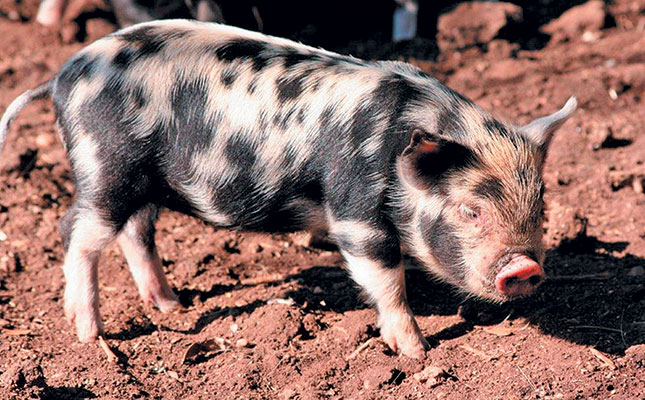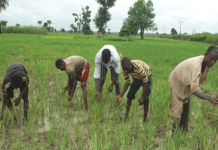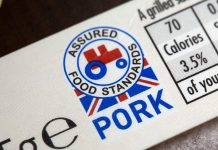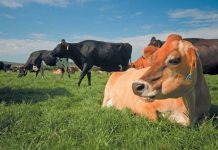The pig breed we know today as the Kolbroek bears little resemblance to the original Kolbroek, the old farm breed of hog.
The modern animal is a synthetic breed developed from a variety of breeds, in similar fashion to the Bonsmara cattle breed or the Dorper sheep breed. This is according to Wessel Pistorius, a Kolbroek breeder from Magaliesburg.
Development of the modern Kolbroek began in 1996 at the Agricultural Research Council (ARC) under the leadership of Dr Danie Visser.
He and his team started by refining the nearly forgotten old Kolbroek breed, and ultimately succeeded in producing a unique, indigenous pig breed.
Kolbroek genetics
The modern Kolbroek consists of, among others, Windsnyer, Sandveld Red, Tamworth and Great White genetics.
The Windsnyer is an ancient, black breed with a long snout that was popular in Zimbabwe.
The Sandveld Red hails from Malmesbury and was bred from Kolbroek and Durocs. The Tamworth is among the oldest pig breeds in the UK, and the Large White originated in Yorkshire.
Domestic pigs crossed with African Bush Pigs were also included in the mix. According to Wessel, almost all the Kolbroeks in South Africa today originate from the ARC programme.
Kolbroek breeding animals were initially hard to come by, but in 2016, Wessel, who farms on Buffelsfontein in the Maanhaarrand area, managed to acquire two sows and one boar.
“I was motivated by the breed’s adaptability, hardiness and fertility. These animals are even-tempered, excellent mothers and healthy. My animals’ health regime consists of deworming from time to time,” he says.
Production notes
Wessel’s pig herd consists of 10 breeding sows and two boars. The gestation period, as with pigs generally, is three months, three weeks and three days.
To synchronise breeding, he puts the sows to the boar one month after they farrow; this means that all the litters are born at the same time, which makes for easier management. The average litter has increased from fewer than five piglets in 2016, to about eight in 2017.
The pigs are weaned at eight to 10 weeks at an average weight of 8kg.
The sows and boars are separated after weaning and kept on a growth-feed mixture comprising maize, spent grain from a local beer brewery, and soya or sunflower oilcake.
The maize is produced on Buffelsfontein.
The young pigs receive 500g of the mixture in the morning, and greens in the afternoon. During Farmer’s Weekly’s visit, the animals were feeding on surplus cucumbers obtained from a neighbouring vegetable farm.
The adult breeding sows and boars are fed only spent grain and maize to prevent them from putting on weight too quickly. A mature Kolbroek weighs about 150kg, and fares extraordinarily well on a high-fibre diet.
“If the animals become too fat, it has a negative affect on fertility and obviously on profitability,” Wessel explains.
“The Kolbroeks fatten up very rapidly. A Kolbroek of about four months can easily present a 35mm back fat layer. The ideal is 25mm. Kolbroek meat is naturally marbled, and the carcasses of young pigs are ideal for manufacturing boerewors, salami, prosciutto hams and a variety of sausages.”
Adding value
Prospective Kolbroek meat producers should be aware that this is a niche product and must be marketed as such, stresses Wessels.
However, crossbreeding with other pig breeds can help improve the marketability and profitability of Kolbroek pork by lessening the fat content and enhancing growth rate.
Wessel’s Kolbroek products are popular among members of the Slow Food Movement, which emphasises traditional and regional cuisine, and encourages the farming of plants, seeds, and livestock characteristic of the local ecosystem.
He has therefore invested in a small meat-processing facility on his farm. According to him, Kolbroek pork is ideal for use in the processing of game meat too.
He also produces ham, crackling, sausages and lard, marketed through a butchery in Johannesburg.
Wessel remains concerned that the producer price for Kolbroeks is up to 50% lower than the prices of other pig breeds at livestock auctions. He ascribes this to a lack of appreciation for the breed’s worth and value.
According to Wessel, Kolbroek sows are ideal for crossbreeding with Duroc and Landrace boars. The pure Kolbroek offspring weigh between 15kg and 18kg at 100 days, while the crosses could weigh up to 33kg at the same age.
The marbling of the meat is retained with crossbreeding, and the hybrid vigour results in improved growth rates, feed conversion and carcass quality of the offspring. The breed is ideally suited to the production of free-range pork.
The Buffelsfontein Kolbroeks are kept in camps large enough for the pigs to move around freely and wallow in mud. Each camp is equipped with ample shade structures.
The demand for Kolbroek breeding genetics by far surpasses supply. Wessel sells genetics countrywide, and has clients as far as Paulpietersburg, Piketberg, Graaff-Reinet and Rouxville. He has even sent pigs to Cape Town by air in dog travel crates.
Small-scale farming
All these attributes make the Kolbroek the ideal choice for homesteads with limited space. The animals flourish on kitchen scraps, as well as on a relatively small amount of extra feed, such as grain. The breed’s feed conversion rate is also excellent.
In his book, Die Kolbroek – ’n Kaleidoskoop van Moontlikhede (The Kolbroek, a Kaleidoscope of Opportunities), Visser writes that the coat should be smooth and glistening.
Pigmentation on the ears, bottom line and mammaries is important. Claws growing far out are a potential problem, especially in sows, and should be carefully managed. The head is relatively small, with a short, broad neck.
The Kolbroek comes in a variety of colours, including black with white blotches and brown with grey blotches. The body frame is small and short compared with other pig breeds in South Africa. Distinctive characteristics are a pot belly and a concave face.
Origin of the name
Visser puts paid to the myth that the original Kolbroek breed originated from the Coalbrook ship disaster near Hangklip in 1778.
According to the myth, the offspring of pigs that escaped from the ship became known as the Kolbroeks or Coalbrooks. But there were no pigs on board.
The original Kolbroek probably originated from pig breeds imported from the East and Europe, the name deriving from the breed’s dotted pigmentation, especially around the haunches.





